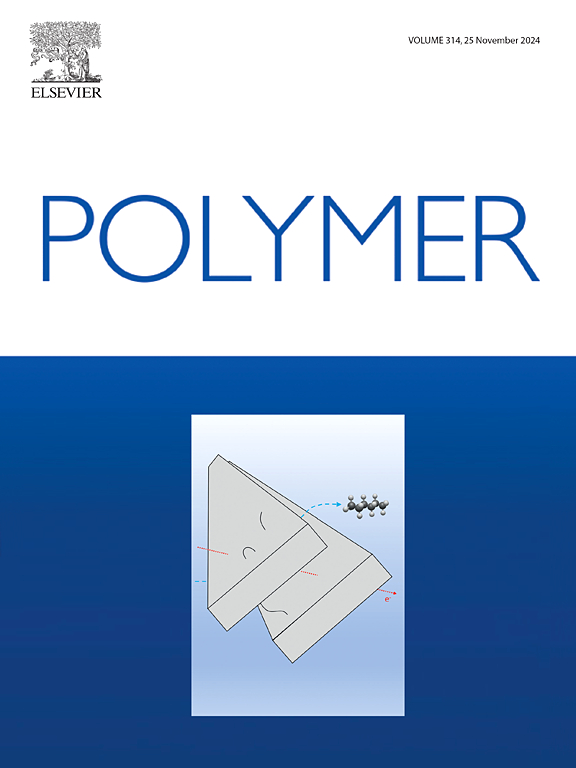Dimensional and conformational properties of pullulan tris(alkylcarbamate)s in tetrahydrofuran
IF 4.1
2区 化学
Q2 POLYMER SCIENCE
引用次数: 0
Abstract
Pullulan tris(n-butylcarbamate) (PTBC) and pullulan tris(ethylcarbamate) (PTEC) samples with different weight-average molar masses Mw were prepared from pullulan samples with varying chain lengths. Size-exclusion chromatography equipped with multi-angle light scattering detectors (SEC-MALS), small-angle X-ray scattering (SAXS), and viscometry were performed on the samples in tetrahydrofuran (THF) at 25 °C to determine Mw, form factor P(q), radius of gyration Rg, second virial coefficient, and intrinsic viscosity [η]. Infrared absorption measurements were also conducted to investigate the intramolecular hydrogen bonding between the C![]() O and NH groups on adjacent monomer units. The obtained P(q), Rg, and [η] data were analyzed using the wormlike chain model with excluded volume effects, primarily to determine the contour length per monomer unit and the Kuhn segment length LK, a measure of chain stiffness. The latter parameter LK values were found to be 10 nm and 8 nm for PTBC and PTEC, respectively. The resulting chain stiffness was significantly lower than that of the corresponding amylose derivatives. Notably, PTBC and PTEC exhibited few intramolecular hydrogen bonding, in contrast to previously investigated amylose derivatives. This characteristic feature suggests that the free polar groups in pullulan derivatives could offer potential applications as macromolecular recognition materials.
O and NH groups on adjacent monomer units. The obtained P(q), Rg, and [η] data were analyzed using the wormlike chain model with excluded volume effects, primarily to determine the contour length per monomer unit and the Kuhn segment length LK, a measure of chain stiffness. The latter parameter LK values were found to be 10 nm and 8 nm for PTBC and PTEC, respectively. The resulting chain stiffness was significantly lower than that of the corresponding amylose derivatives. Notably, PTBC and PTEC exhibited few intramolecular hydrogen bonding, in contrast to previously investigated amylose derivatives. This characteristic feature suggests that the free polar groups in pullulan derivatives could offer potential applications as macromolecular recognition materials.


求助全文
约1分钟内获得全文
求助全文
来源期刊

Polymer
化学-高分子科学
CiteScore
7.90
自引率
8.70%
发文量
959
审稿时长
32 days
期刊介绍:
Polymer is an interdisciplinary journal dedicated to publishing innovative and significant advances in Polymer Physics, Chemistry and Technology. We welcome submissions on polymer hybrids, nanocomposites, characterisation and self-assembly. Polymer also publishes work on the technological application of polymers in energy and optoelectronics.
The main scope is covered but not limited to the following core areas:
Polymer Materials
Nanocomposites and hybrid nanomaterials
Polymer blends, films, fibres, networks and porous materials
Physical Characterization
Characterisation, modelling and simulation* of molecular and materials properties in bulk, solution, and thin films
Polymer Engineering
Advanced multiscale processing methods
Polymer Synthesis, Modification and Self-assembly
Including designer polymer architectures, mechanisms and kinetics, and supramolecular polymerization
Technological Applications
Polymers for energy generation and storage
Polymer membranes for separation technology
Polymers for opto- and microelectronics.
 求助内容:
求助内容: 应助结果提醒方式:
应助结果提醒方式:


